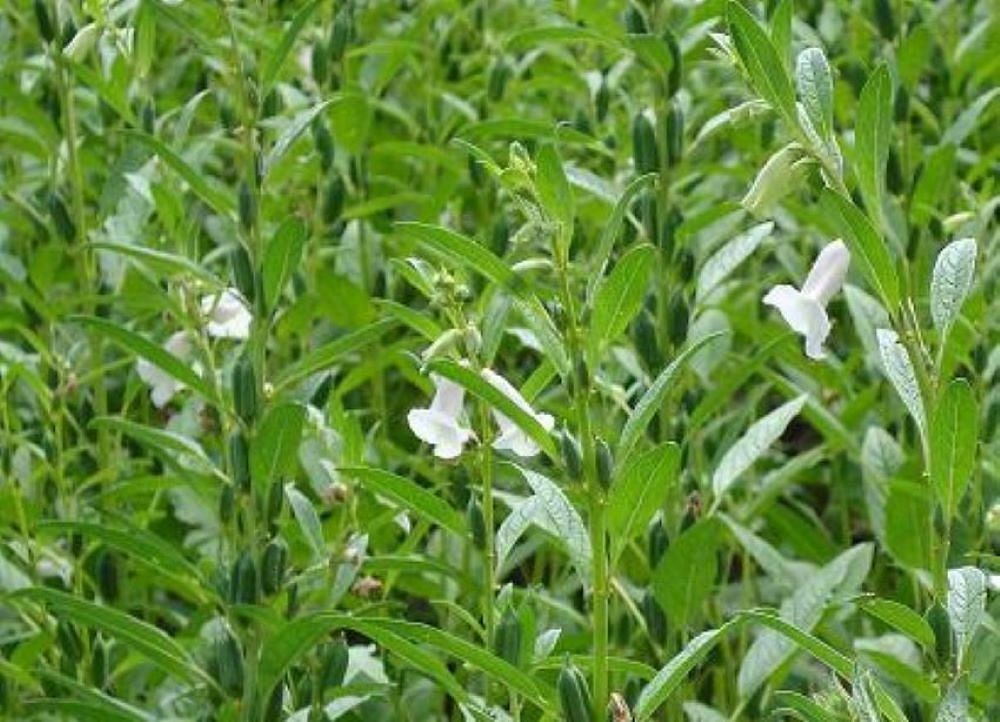
As the Rabi crop harvesting season draws to a close across the country, farmers find themselves with a golden opportunity before the Kharif crop planting begins. During this gap, farmers can make the most of their fallow fields, and many are turning to sesame (Sesamum indicum L.) cultivation as a promising and profitable choice. Let's discuss the important aspects you should know when growing sesame.
Sesame has a special place as one of India's oldest native oilseed crops, with a long history of cultivation. Its planting and care particularly shine after the rabi crop season, offering farmers a practical way to increase their profits.
Sesame Cultivation: Climatic Requirements
Sesame cultivation spans various states, encompassing both extensive and compact areas, and can be successfully grown at altitudes reaching up to 1200 meters in India. The plant favors relatively high temperatures throughout its growth cycle, ideally between 25-35°C. However, extreme weather conditions can be detrimental, with temperatures surpassing 40°C leading to reduced seed oil content. Additionally, temperatures below 15°C or exceeding 45°C render pollen sterile, significantly impacting yield potential.
Proper moisture management is important, as excessive water and prolonged field saturation can compromise sesame growth. Adequate and evenly distributed rainfall during the kharif season substantially benefits sesame cultivation.
Recent climate shifts have resulted in irregular rainfall patterns, posing challenges for sesame farmers. Unpredictable weather conditions not only affect yield but also increase vulnerability to biotic stresses. The urgent need for resilient sesame varieties, capable of withstanding harsh climates, emphasizes the importance of developing cultivars that exhibit tolerance to varying light and temperature conditions, respond well to tailored fertilizer regimes based on moisture levels, and demonstrate resistance to prevalent insect pests and diseases.
Improved Varieties of Sesame:
Sesame cultivation is significantly influenced by seasonal changes in day length and temperature. As a result, the choice of sesame varieties for commercial farming depends on specific locations and seasons. Farmers tend to select particular varieties in different regions based on their popularity and desirable traits such as seed color, resistance to pests and diseases, and the potential for higher market prices.
Statewise Farmers Preferred Varieties
|
State |
Preferred Varieties |
|
Gujarat |
Guj-Til-1, Guj-Til-2, Guj-Til-3, Guj-Til-4, Guj-Til-10 |
|
Madhya Pradesh / Chhattisgarh |
TKG-21, TKG-22, TKG-55, JTS-8, TKG-306, TKG-308, PKDS-8, PKDS-11, PKDS-12 |
|
Rajasthan |
RT-46, RT-54, RT-103, RT-125, RT-127, RT-346, RT-351 |
|
Maharashtra |
AKT-64, AKT-101, JLT-408, PKVNT-11, Phule Til.1 |
|
Uttar Pradesh |
T-78, Sekhar, Pragati, Tarun |
|
Tamil Nadu |
Co-1, TSS-6, Paiyur-1, VRI-1, VRI-2, TMV-7 |
|
West Bengal |
Rama, Savitri, Tilottama (B-67) |
|
Orissa |
Nirmala, Prachi, Amrit, Shubhra, Smarak, Usha, Uma, Vinayak |
|
Andhra Pradesh |
Varaha, Gautama, Swetha til, Chandana, Hima, Rajeshwari |
|
Kerala |
Thilathara, Thilarani, Thilak, Kayamkulam-1 |
|
Karnataka |
DS-1, DS-5, DSS-9 |
|
Punjab |
Punjab Til-1, TC-25, TC-289 |
|
Bihar |
Krishna |
|
Haryana |
Haryana Til-1, Haryana Til-2 |
|
Himachal Pradesh |
Brijeshwari |
Seed Treatment
For effective disease prevention, it is recommended to treat sesame seeds with Thiram (2 g/kg) + Carbendazim (1 g/kg) or Trichoderma viride (5 g/kg). In areas susceptible to bacterial leaf spot disease, soaking seeds in a 0.025% solution of Agrimycin-100 for 30 minutes before sowing can mitigate risks.
Manures & Fertilizers
To enhance soil quality and optimize crop yield, apply approximately 5 tonnes per hectare of well-decomposed farmyard manure before the final ploughing, ensuring thorough soil integration. Sesame plants respond favorably to inorganic fertilizers, with the specific dosage tailored to factors such as sesame variety, prevailing season, soil fertility, preceding crops, rainfall patterns, and soil moisture levels.
(Inputs taken from: ICAR-IIOR)











